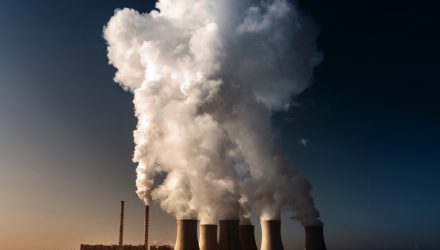Asset management firm KraneShares has announced in a press release the launch of two new targeted ETFs within the carbon allowances markets: the KraneShares European Carbon Allowance ETF (KEUA) and the KraneShares California Carbon Allowance ETF (KCCA).
Many countries and regions have adopted cap-and-trade programs for carbon emissions that set limits on how much carbon an individual company can emit before having to purchase allowances to offset additional emissions.
The markets currently invested in by KraneShares have cap-and-trade programs set against emissions limits in accord with the Paris Agreement. By creating such programs, investors and markets can work together to put pressure on companies to curb emissions as it gets increasingly more expensive to exceed the emissions limit.
Both funds join the growing suite of ETFs focused on carbon allowances alongside the KraneShares Global Carbon ETF (KRBN), which takes a global approach to investing in carbon markets. KRBN currently invests in the EU and North American markets, whereas the two new funds will each target one market alone.
“Through the phenomenal success of KRBN, we learned that many of our clients also want targeted exposure to the underlying markets,” said Luke Oliver, managing director and head of strategy at KraneShares. “KEUA and KCCA provide access to the component carbon allowance markets at various stages of their growth cycle. With these new ETFs, investors can take a customizable precision-approach to invest in carbon markets.”
The Targeted Carbon Market ETFs
KEUA offers exposure to the European Union Allowances cap-and-trade carbon allowance program only and is actively managed.
The fund’s benchmark is the IHS Markit Carbon EUA Index, an index that tracks the most-traded EUA futures contracts, a market that is the oldest and most liquid for carbon allowances. The market currently offers coverage for roughly 40% of all emissions from the EU, including 27 member states as well as Norway, Iceland, and Liechtenstein. The annual cap reduction was recently increased from 2.2% to 4.2% in an attempt to meet long-term carbon emission targets.
As the fund is actively managed, it may invest in carbon credit futures that have different maturity dates, or weight futures differently than the index. The fund potentially trades in CTFC-regulated futures and swaps above the CFTC 4.5 limit and is therefore considered a “commodity pool.”
KEUA has an expense ratio of 0.79%.
KCCA offers exposure to the California Carbon Allowances cap-and-trade carbon allowance program only and is actively managed.
The fund’s benchmark is the HIS Markit Carbon CCA Index, an index tracks the most-traded CCA futures contracts, a market that encompasses roughly 80% of California’s greenhouse gas emissions and has also covered Quebec’s emissions since it expanded in 2014. The cap is currently set to decrease by 4% every year to meet future targeted carbon emissions levels, and it has a built-in floor price that raises 5% plus an inflation adjustment yearly.
As the fund is actively managed, it may invest in carbon credit futures that have different maturity dates, or weight futures differently than the index. The fund potentially trades in CTFC-regulated futures and swaps above the CFTC 4.5 limit and is therefore also considered a “commodity pool.”
KCCA also carries an expense ratio of 0.79%.
“The funds will track the California and European markets specifically, allowing investors to refine their exposures to the individual markets and compliment their exposure to KRBN and the carbon markets. With their diversification benefits, structural upside potential and their exposure to the primary climate policy tool, investors should review where carbon fits in their portfolio,” Oliver told ETF Trends.
For more news, information, and strategy, visit the China Insights Channel.

